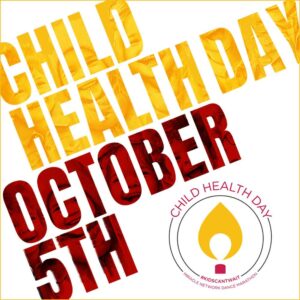As the crisp autumn air settles in, October arrives with its vivid colors and promises of change. It’s not just about pumpkins and spooky decorations—it’s also a month rich with historical moments that have significantly shaped the field of education. From policy reforms to influential literature, television shows, and movies, October has been a key month in the evolution of how we view and approach learning. Let’s take a journey through some of the pivotal events and figures who have left a lasting mark on education, all tied to this month.
Events That Shaped Education in October
National Child Health Day | October 7
National Child Health Day, observed on the first Monday of every October, is a vital reminder of the profound connection between a child’s health and their academic success. It’s easy to focus solely on test scores, homework, and classroom performance when discussing education, but this day highlights a broader and more holistic view of what it takes for children to truly thrive in educational settings. A healthy child—both physically and mentally—is better equipped to engage in learning, participate in activities, and build positive relationships with peers and teachers.
Physical well-being, supported by regular exercise, proper nutrition, and preventive healthcare, lays the foundation for a child’s ability to concentrate, solve problems, and develop resilience. Meanwhile, mental health, often overlooked, is just as crucial. Emotional support, stress management, and the development of healthy coping mechanisms allow students to navigate challenges both in and out of the classroom.
National Child Health Day calls on schools, communities, and families to collaborate in creating environments that foster not only academic growth but also holistic wellness. It is a day to reflect on the importance of health initiatives like school-based physical activity programs, nutritious meal options, and access to mental health resources, all of which are integral to a child’s success.
National Child Labor Committee (NCLC) | October 8, 1955
 On October 8, 1955, the National Child Labor Committee (NCLC) celebrated a significant achievement in its ongoing battle to end child labor in the United States. Founded in 1904, the NCLC was at the forefront of a movement to protect vulnerable children from the harsh and often dangerous conditions they faced in factories, mines, and other industries. For decades, children were seen as cheap labor, and their education often took a backseat to the economic needs of their families. The NCLC worked tirelessly to change this reality, advocating for legislation that would limit the employment of children and prioritize their right to education.
On October 8, 1955, the National Child Labor Committee (NCLC) celebrated a significant achievement in its ongoing battle to end child labor in the United States. Founded in 1904, the NCLC was at the forefront of a movement to protect vulnerable children from the harsh and often dangerous conditions they faced in factories, mines, and other industries. For decades, children were seen as cheap labor, and their education often took a backseat to the economic needs of their families. The NCLC worked tirelessly to change this reality, advocating for legislation that would limit the employment of children and prioritize their right to education.
The efforts of the NCLC helped shift societal norms, transforming the role of children from laborers to learners. By championing laws that enforced minimum working ages, regulated work hours, and required school attendance, the organization ensured that children could focus on their education instead of enduring grueling work conditions. These reforms laid the groundwork for the child protection laws we rely on today, ensuring that children are provided safe, supportive environments to grow and learn.
The NCLC’s legacy continues to influence modern education systems, where the emphasis is now on learning, development, and well-being, rather than exploitation for labor. This milestone in 1955 was a victory not only for children but for the future of education as well.
National Head Start Association Formed | October 15, 1966
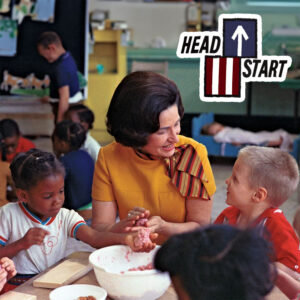 October 15 marks the anniversary of the National Head Start Association’s formation in 1966, a pivotal moment in the fight to break the cycle of poverty through education. Born out of President Lyndon B. Johnson’s War on Poverty, the Head Start program was championed by both the president and First Lady Lady Bird Johnson, whose advocacy for early childhood education played a crucial role in promoting the initiative. Lady Bird recognized the profound impact that Head Start could have on the lives of low-income children and was instrumental in raising public awareness about the program.
October 15 marks the anniversary of the National Head Start Association’s formation in 1966, a pivotal moment in the fight to break the cycle of poverty through education. Born out of President Lyndon B. Johnson’s War on Poverty, the Head Start program was championed by both the president and First Lady Lady Bird Johnson, whose advocacy for early childhood education played a crucial role in promoting the initiative. Lady Bird recognized the profound impact that Head Start could have on the lives of low-income children and was instrumental in raising public awareness about the program.
Head Start was designed to address the educational disadvantages faced by children from low-income families, promoting school readiness through a comprehensive approach to child development. It offered more than just early education—it provided services that included health screenings, nutrition, and family support, all essential to ensuring that children enter school prepared to succeed.
The program’s mission was, and continues to be, to ensure that all children, regardless of socio-economic background, have the opportunity to thrive academically, socially, and emotionally. By incorporating parental involvement and addressing the holistic needs of children, Head Start creates an environment that supports their overall well-being.
Since its inception, Head Start has touched the lives of millions of children across the United States. Its focus on early development has had a lasting impact, shaping generations and laying the foundation for future success. As we celebrate this anniversary, we recognize the continued importance of investing in early childhood education and family support systems, which Lady Bird Johnson so passionately advocated for.
United Nations Founded | October 24, 1945
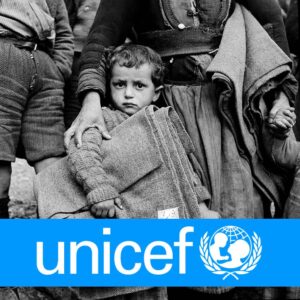 The formation of the United Nations on October 24, 1945, marked the beginning of a global organization dedicated to fostering peace, security, and cooperation among nations. One of its most significant achievements has been its advocacy for children’s education and well-being, particularly through the work of UNICEF (the United Nations International Children’s Emergency Fund). Established in 1946, UNICEF has been a key player in promoting access to education for children around the world, especially those in developing countries and conflict zones where education is often disrupted or entirely inaccessible.
The formation of the United Nations on October 24, 1945, marked the beginning of a global organization dedicated to fostering peace, security, and cooperation among nations. One of its most significant achievements has been its advocacy for children’s education and well-being, particularly through the work of UNICEF (the United Nations International Children’s Emergency Fund). Established in 1946, UNICEF has been a key player in promoting access to education for children around the world, especially those in developing countries and conflict zones where education is often disrupted or entirely inaccessible.
UNICEF’s efforts have been instrumental in improving educational opportunities for millions of children. By providing resources such as schools, teachers, and learning materials, along with promoting health and nutrition programs, UNICEF ensures that children not only have access to education but also the support they need to succeed. Their work has focused on reaching the most marginalized populations, including girls, refugees, and children affected by war.
United Nations Day, celebrated every October 24, reminds us of the ongoing global fight for quality education—a fundamental right that every child deserves. It serves as a call to action to continue working towards a future where all children, regardless of their circumstances, have the opportunity to learn and thrive.
Works Progress Administration (WPA) Nursery Schools | October 10, 1935
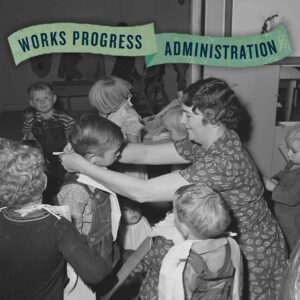 During the Great Depression, families across the United States faced unprecedented economic challenges, including widespread unemployment and financial instability. In response, President Franklin D. Roosevelt’s New Deal programs aimed to provide relief and recovery for American workers and their families. Among these initiatives was the Works Progress Administration (WPA), which launched nursery schools across the country, starting on October 10, 1935. These schools were created to offer care and education for young children while their parents participated in the workforce to rebuild the struggling economy.
During the Great Depression, families across the United States faced unprecedented economic challenges, including widespread unemployment and financial instability. In response, President Franklin D. Roosevelt’s New Deal programs aimed to provide relief and recovery for American workers and their families. Among these initiatives was the Works Progress Administration (WPA), which launched nursery schools across the country, starting on October 10, 1935. These schools were created to offer care and education for young children while their parents participated in the workforce to rebuild the struggling economy.
The WPA nursery schools were groundbreaking, as they not only addressed the immediate need for child care during an economic crisis but also highlighted the long-term value of early childhood education. These programs provided a safe, structured environment for children, focusing on their social, emotional, and intellectual development. Teachers in the WPA nursery schools were tasked with creating enriching experiences that promoted learning, play, and well-being, ensuring that even the youngest members of society were supported during tough times.
By recognizing the essential role of early childhood education in supporting both working families and the broader economy, the WPA nursery schools laid the foundation for future public education initiatives, such as Head Start. These programs continue to provide vital resources for working parents, helping to balance economic stability with educational opportunities for their children.
Books that Revolutionized Education
"How Children Succeed" by Paul Tough | October 9, 2012
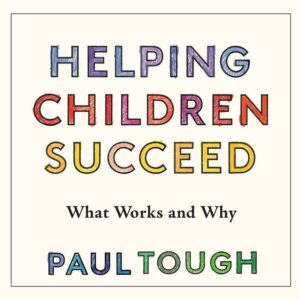 Paul Tough’s book, How Children Succeed, released on October 9, 2012, revolutionized the way educators and parents view child development and academic success. Moving away from the traditional emphasis on cognitive skills like IQ and test scores, Tough’s work brought attention to the critical role of non-cognitive traits—qualities such as perseverance, curiosity, grit, and resilience. According to Tough, these traits are often more indicative of a child’s long-term success than purely academic abilities.
Paul Tough’s book, How Children Succeed, released on October 9, 2012, revolutionized the way educators and parents view child development and academic success. Moving away from the traditional emphasis on cognitive skills like IQ and test scores, Tough’s work brought attention to the critical role of non-cognitive traits—qualities such as perseverance, curiosity, grit, and resilience. According to Tough, these traits are often more indicative of a child’s long-term success than purely academic abilities.
Tough’s research, drawing from neuroscience and psychology, suggests that character development is just as essential to a child’s growth as learning math or reading. He explores how children from challenging environments, often facing adversity and hardship, can thrive when they develop these essential life skills. The book has sparked a shift in educational philosophy, encouraging schools to foster environments where emotional intelligence, problem-solving, and social skills are cultivated alongside academic subjects.
By presenting a more holistic approach to education, How Children Succeed has inspired teachers, parents, and policymakers to rethink their strategies, focusing not just on what children know, but on who they are becoming. This shift has helped redefine success, placing character development at the heart of educational systems worldwide.
"The Read-Aloud Handbook" by Jim Trelease | October 1, 1982
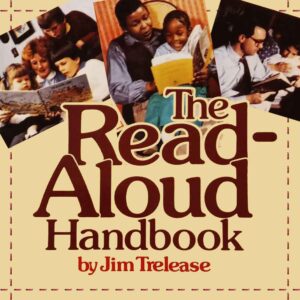 Published on October 1, 1982, Jim Trelease’s The Read-Aloud Handbook quickly became a groundbreaking resource for educators and parents, forever changing how we approach literacy education. Trelease’s central message was simple yet profound: reading aloud to children is one of the most effective ways to foster a lifelong love of reading and learning. He argued that this practice not only strengthens children’s language and literacy skills but also builds a foundation for academic success, critical thinking, and emotional development.
Published on October 1, 1982, Jim Trelease’s The Read-Aloud Handbook quickly became a groundbreaking resource for educators and parents, forever changing how we approach literacy education. Trelease’s central message was simple yet profound: reading aloud to children is one of the most effective ways to foster a lifelong love of reading and learning. He argued that this practice not only strengthens children’s language and literacy skills but also builds a foundation for academic success, critical thinking, and emotional development.
Trelease emphasized that reading aloud shouldn’t be limited to young children or preschoolers—it should continue well into a child’s elementary years, as the shared experience of reading can stimulate imagination, improve comprehension, and enhance vocabulary. He also pointed out that reading aloud offers an opportunity for families to bond, turning literacy into a shared, enjoyable activity rather than a solitary or purely academic task.
Since its publication, The Read-Aloud Handbook has inspired countless families, teachers, and caregivers to incorporate regular read-aloud sessions into their routines, and its influence can still be seen today in classrooms and homes around the world. Trelease’s work remains a vital part of early childhood education, reminding us that storytelling is not just a teaching tool, but also a means of creating meaningful connections and nurturing a love of learning.
Shows that Shaped Young Minds
"Sesame Street" Revamp | October 1, 1999
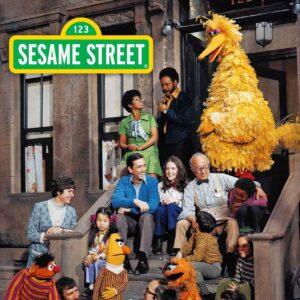 Although Sesame Street first debuted in 1969, the iconic children’s program underwent a significant revamp in October 1999, introducing new characters, storylines, and segments designed to better address the needs of contemporary preschoolers. This refresh focused heavily on core subjects like math, literacy, and life skills, aligning the show with evolving educational standards while retaining its signature blend of fun and learning. By incorporating these changes, Sesame Street remained a relevant and effective tool for teaching early childhood education to new generations.
Although Sesame Street first debuted in 1969, the iconic children’s program underwent a significant revamp in October 1999, introducing new characters, storylines, and segments designed to better address the needs of contemporary preschoolers. This refresh focused heavily on core subjects like math, literacy, and life skills, aligning the show with evolving educational standards while retaining its signature blend of fun and learning. By incorporating these changes, Sesame Street remained a relevant and effective tool for teaching early childhood education to new generations.
The revamp also brought a renewed emphasis on emotional intelligence, problem-solving, and social skills, ensuring that children received a well-rounded educational experience. Beloved characters like Big Bird and Elmo were joined by new faces, and segments like “Elmo’s World” became favorites that continued to teach children in engaging and accessible ways. The show’s innovative approach—mixing entertainment with research-backed educational content—cemented its role as a pioneer in early learning.
For over 50 years, Sesame Street has helped millions of children around the world develop foundational skills in counting, reading, and emotional development. Its ability to evolve with the times while staying true to its educational mission is a testament to the show’s enduring impact on early childhood learning, making it one of the most influential programs in children’s television history.
"Blue's Clues" | October 1996
 Blue’s Clues made its television debut in October 1996 and rapidly became a groundbreaking force in educational television. Unlike many children’s shows at the time, Blue’s Clues pioneered an interactive format that actively engaged its young audience in solving problems, recognizing patterns, and developing emotional intelligence. The show’s host, along with the animated dog Blue, would ask viewers to participate directly in the story by answering questions, helping to find clues, and making connections. This approach turned what could have been a passive viewing experience into an interactive and immersive learning process.
Blue’s Clues made its television debut in October 1996 and rapidly became a groundbreaking force in educational television. Unlike many children’s shows at the time, Blue’s Clues pioneered an interactive format that actively engaged its young audience in solving problems, recognizing patterns, and developing emotional intelligence. The show’s host, along with the animated dog Blue, would ask viewers to participate directly in the story by answering questions, helping to find clues, and making connections. This approach turned what could have been a passive viewing experience into an interactive and immersive learning process.
What made Blue’s Clues so effective was its ability to encourage children to think critically and use reasoning skills in a fun, approachable way. The format was structured around repetition and exploration, which research shows are powerful tools in early childhood education. The show also incorporated emotional learning by teaching kids to express and understand their feelings, making it a well-rounded educational tool.
By inviting children to be part of the process, Blue’s Clues didn’t just entertain—it empowered its young audience to become active learners. Through play and exploration, children developed problem-solving skills, built confidence, and learned how to approach challenges with curiosity and determination, making the show a lasting success in educational media.
Movies that Inspired Change
"Dead Poets Society" | October 9, 1989
 Released in October 1989, Dead Poets Society has become one of the most iconic and influential films about education. Starring Robin Williams in one of his most memorable roles, the film centers on John Keating, an unorthodox English teacher at a conservative boys’ prep school. Keating inspires his students to embrace their individuality, challenge societal expectations, and pursue their passions—often in defiance of the rigid norms enforced by the school. His mantra, “Carpe Diem” (seize the day), encourages his students to think for themselves and find their own voice in a world that often demands conformity.
Released in October 1989, Dead Poets Society has become one of the most iconic and influential films about education. Starring Robin Williams in one of his most memorable roles, the film centers on John Keating, an unorthodox English teacher at a conservative boys’ prep school. Keating inspires his students to embrace their individuality, challenge societal expectations, and pursue their passions—often in defiance of the rigid norms enforced by the school. His mantra, “Carpe Diem” (seize the day), encourages his students to think for themselves and find their own voice in a world that often demands conformity.
Dead Poets Society explores the profound impact teachers can have, not just in the academic development of their students but in their personal growth and self-discovery. Keating’s influence extends far beyond the classroom, helping his students navigate the pressures of tradition, authority, and their own internal struggles. The film’s themes of self-expression, creativity, and the sometimes-stifling nature of traditional education resonate deeply with audiences, even decades after its release.
The film remains a powerful reminder of the role educators play in shaping not only the minds but the hearts and futures of their students, offering lessons about courage, nonconformity, and the importance of following one’s true passion.
Conclusion
October is not only a month of autumn leaves and Halloween festivities—it’s a month filled with significant milestones that have forever altered the course of education. From historical events that reshaped child labor and early education to influential books, television shows, and movies that continue to inspire generations of learners, October reminds us that education is an ever-evolving journey. These milestones encourage us to reflect on how far we’ve come and to continue pushing for a future where every child has access to quality education, good health, and opportunities for personal growth. So, let’s celebrate the trailblazers and their contributions this October—and remember, learning never goes out of style.


